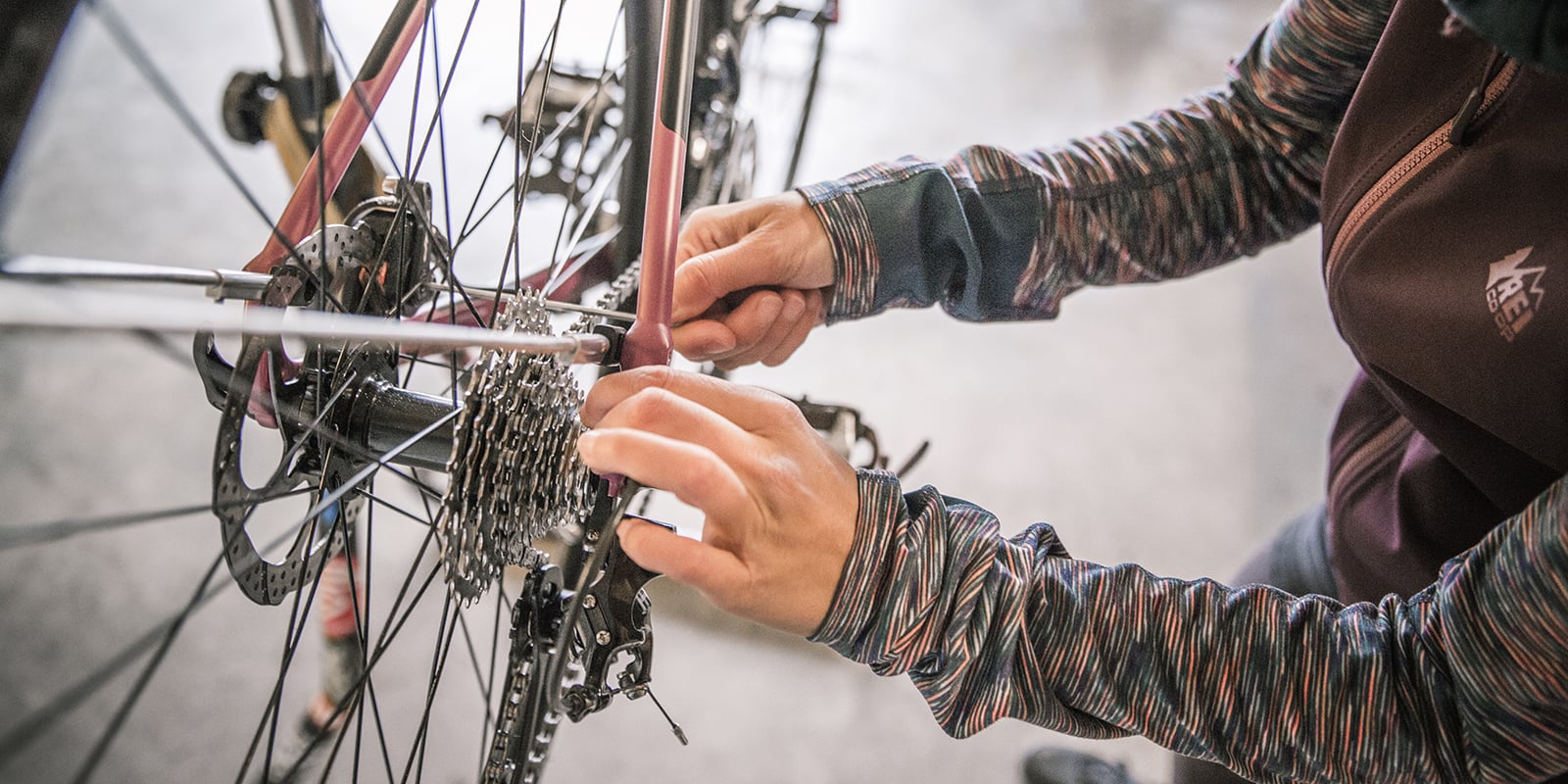How to properly maintain a mountain bike? Mountain biking is a fun and thrilling activity. But, maintaining your bike is crucial. Proper care ensures a smooth and safe ride. Here is how to properly maintain a mountain bike.
1. Regular Cleaning
Dirt and grime can cause significant damage to your bike’s components. After every ride, especially in muddy conditions, rinse your bike to remove dirt and debris. Use a gentle bike-specific cleaner and soft brushes to clean hard-to-reach areas. Avoid using high-pressure water, as it can force water and dirt into bearings and other sensitive parts
Cleaning removes mud and dust. This prevents rust and keeps your bike looking new.
Why It’s Important: Dirt, mud, and grime can corrode your bike’s components, leading to wear and rust.
How to Clean:
- Start by rinsing the bike with a gentle stream of water to remove loose dirt.
- Use a bike-specific cleaner and brushes to clean the frame, wheels, and drivetrain. Pay special attention to areas like the chain, cassette, and derailleurs, where dirt can accumulate.
- Avoid high-pressure water, which can strip away grease from essential parts and force water into bearings
2. Tire and Brake Checks
Before every ride, check your tire pressure and inspect the tires for any signs of damage, such as cracks or wear. Properly inflated tires enhance control and reduce the risk of flats. Additionally, check your brakes to ensure they are functioning correctly. Replace worn brake pads and ensure that the brake levers are responsive and effective.
Why It’s Important: Tires and brakes are critical for safety and performance.
Tire Maintenance:
- Check for cuts, punctures, or excessive wear. Ensure the tire pressure is at the recommended PSI (found on the tire sidewall).
- Proper inflation prevents flats and provides a smooth ride.
3. Chain Maintenance
The chain is one of the most critical components of your bike. Regularly clean it using a degreaser and a chain cleaning tool. After cleaning, dry the chain thoroughly and apply a suitable lubricant. Lubricate the chain every few rides, depending on the conditions you ride in. Proper lubrication reduces wear and tear and ensures smooth shifting.
Why It’s Important: The chain is central to the bike’s drivetrain. A well-maintained chain ensures smooth shifting and prolongs the life of other components.
How to Maintain:
- Use a degreaser to clean the chain, removing old lubricant and grime. Scrub with a brush if necessary.
- Wipe the chain dry and apply a fresh coat of chain lubricant, suitable for the riding conditions (wet or dry lube).
- Wipe off excess lubricant to prevent attracting dirt.
4. Tighten Bolts and Nuts
Loose bolts and nuts can lead to component failure and potential accidents. Key areas to focus on include the handlebar, stem, seat post, and crank arms. Use a torque wrench to ensure these are tightened to the manufacturer’s specifications. Over-tightening can strip threads or damage components, while under-tightening can result in parts coming loose during a ride.
Why It’s Important: Loose bolts and nuts can lead to unstable bike components, posing safety risks and potentially causing damage.
How to Tighten:
- Regularly check all bolts and nuts, especially those on the handlebars, stem, seat post, and wheels.
- Use a torque wrench to ensure bolts are tightened to the manufacturer’s specifications. Over-tightening can strip threads or damage components, while under-tightening can cause parts to come loose during a ride.
- Focus on key areas like the crank arms, pedals, and derailleur bolts, as these are subjected to significant forces.
5. Adjust the Gears
Proper gear adjustment is crucial for smooth shifting and reducing wear on the drivetrain. This process involves ensuring the derailleur’s alignment and tensioning the cables correctly. If shifting is sluggish or imprecise, fine-tune the barrel adjuster to adjust cable tension. Limit screws may also need adjustment to prevent the chain from overshooting the cogs.
Why It’s Important: Properly adjusted gears ensure smooth shifting and efficient power transfer, preventing wear on the drivetrain.
How to Adjust:
- Check the indexing of the gears. Misaligned gears can cause poor shifting and wear out the chain and cassette.
- Use the barrel adjuster on the derailleur to fine-tune the cable tension. Turn the barrel adjuster counterclockwise to tighten the cable (improving upshifting) and clockwise to loosen it (improving downshifting).
- Ensure the derailleur hanger is straight and not bent, as this can affect shifting accuracy
6. Check the Suspension
The suspension system, including the forks and rear shocks, requires regular maintenance to absorb shocks effectively and ensure a comfortable ride. Check for oil leaks and adjust air pressure based on your weight and riding style. Regularly clean and occasionally lubricate the suspension components to maintain their performance. Correctly setting the sag and rebound is essential for optimal comfort and handling.
Why It’s Important: The suspension system absorbs shocks and ensures a comfortable ride, especially on rough terrains.
How to Check:
- Inspect the suspension forks and rear shocks for any signs of oil leaks or damage.
- Check the air pressure in the shocks and adjust it based on your weight and riding style. The correct pressure ensures optimal performance and comfort.
- Regularly clean the suspension components and lubricate as needed to maintain smooth operation. Adjust the sag and rebound settings according to your preference and the terrain
7. Store Your Bike Properly
Proper storage is crucial to prevent damage and prolong the bike’s life. Store the bike in a dry, cool place, away from direct sunlight to avoid UV damage and corrosion. Keep the tires inflated during long-term storage to prevent flat spots. Cover the bike to protect it from dust and moisture, and consider using a bike stand or hanging the bike to avoid pressure on any single component.
Why It’s Important: Proper storage prevents damage and prolongs the life of your bike.
How to Store:
- Store your bike in a dry, cool place, away from direct sunlight, to prevent UV damage and corrosion.
- If storing the bike for an extended period, keep the tires inflated to avoid flat spots.
- Consider using a bike cover to protect the bike from dust and moisture. If possible, hang the bike by the frame or wheels to avoid putting pressure on any single point

Credit: www.youtube.com
8. Regular Professional Servicing
Despite regular at-home maintenance, professional servicing is essential. Mechanics can perform in-depth checks and repairs, such as suspension tuning, wheel truing, and bearing replacement. It’s advisable to get a professional service at least once a year, or more frequently if you ride extensively. This helps catch issues early and ensures all components are functioning optimally.
Why It’s Important: Professional servicing ensures all components are in good working order and can identify issues that might not be apparent during regular maintenance.
What to Expect:
- A professional service typically includes a comprehensive check of all bike components, adjustments to gears and brakes, inspection and replacement of worn parts, and a thorough cleaning.
- Professionals can also help with complex repairs, such as suspension servicing, bearing replacement, and wheel truing.
- Regular servicing, at least once or twice a year, helps maintain bike performance and safety

Credit: www.rei.com
9. Keep Your Bike Tools Handy
Having a set of essential bike tools is crucial for on-the-go repairs and regular maintenance. A multi-tool with Allen keys and screwdrivers, tire levers, a patch kit, and a mini-pump are indispensable. A torque wrench helps ensure bolts are tightened correctly. Additionally, keep chain lube, cleaning brushes, and degreaser on hand for regular cleaning and lubrication, which are key to maintaining the bike’s performance.
Why It’s Important: Having the right tools on hand allows you to perform routine maintenance and handle minor repairs quickly.
Essential Tools:
- A multi-tool with Allen keys, screwdrivers, and chain breakers is a must-have for on-the-go adjustments.
- Tire levers, a patch kit, and a mini-pump or CO2 inflator are essential for fixing flats.
- A torque wrench ensures that bolts are tightened to the correct specifications.
- Chain lube, cleaning brushes, and degreaser help keep your bike clean and running smoothly.
Frequently Asked Questions
How Often Should I Clean My Mountain Bike?
Clean your mountain bike after every ride, especially in muddy or wet conditions.
What Tools Are Needed For Bike Maintenance?
Essential tools include a multi-tool, chain cleaner, bike pump, and lubricants.
How Do I Lubricate My Bike Chain?
Apply bike-specific lubricant to a clean, dry chain, then wipe off excess.
What Tire Pressure Is Best For Mountain Bikes?
Check the sidewall of your tires. Typically, 30-50 psi is ideal.
How Can I Prevent Rust On My Mountain Bike?
Keep your bike dry, clean, and properly lubricated to prevent rust.
How To Adjust Mountain Bike Brakes?
Use the barrel adjuster or caliper screws to fine-tune brake tension and alignment.
What Parts Need Regular Inspection?
Check brakes, tires, chain, and suspension regularly for wear and tear.
Conclusion
Proper maintenance of your mountain bike ensures a safe and enjoyable ride. Follow these simple steps to keep your bike in top condition. Regular cleaning, checking, and professional servicing will keep your bike running smoothly for years. Enjoy your ride!

Steven is a professional cyclist and his passion is cycling. He has been cycling for the last 6 years and he loves using bikes while outing as well. Based on his experiences with the different types of bikes; he is sharing his opinions about various bikes so that a beginner can start right away. Find him on Twitter @thecyclistguy Happy Biking.


Leave a Reply